Letter of Intent Template for Purchasing a Business
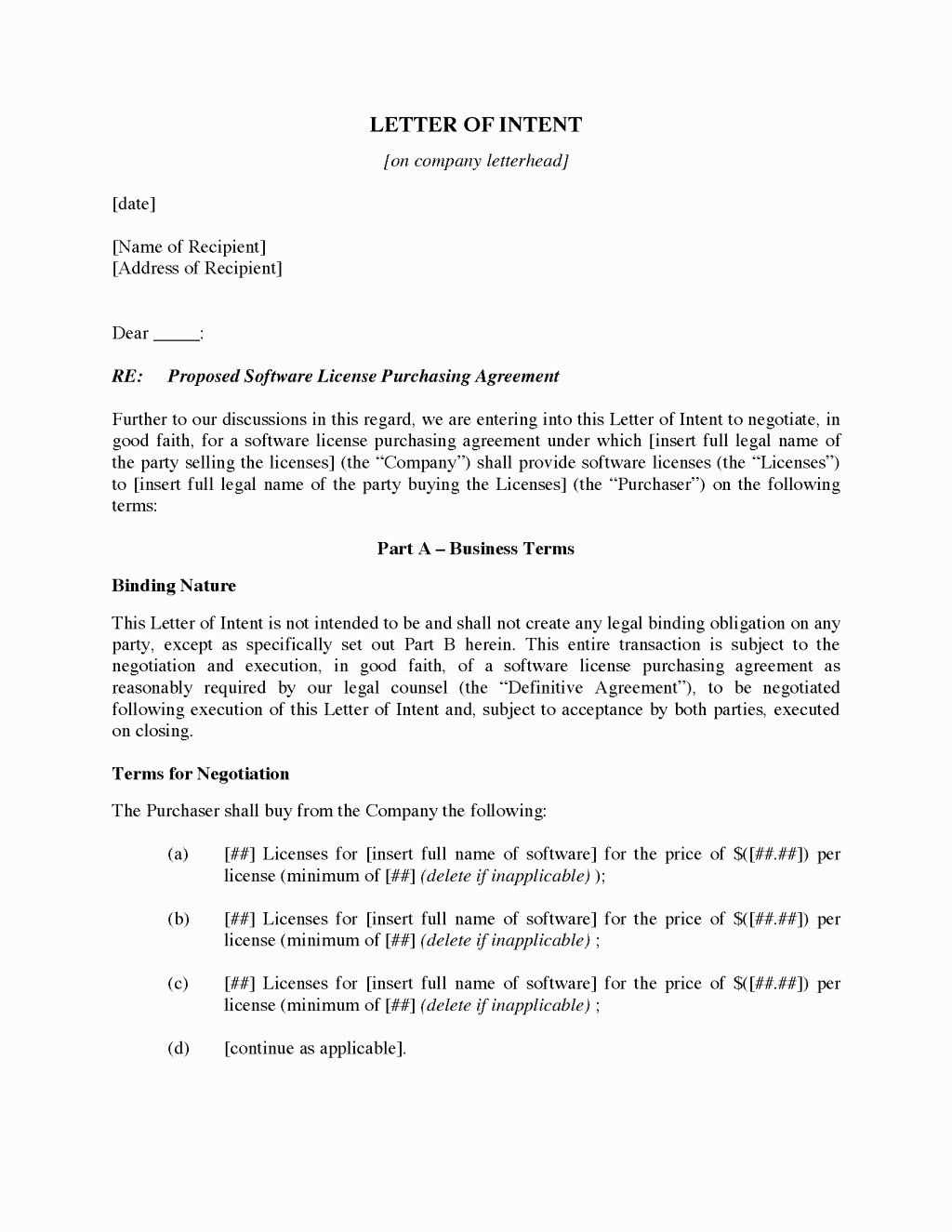
When considering an agreement for acquiring a company, a clear and concise document outlining the key points is essential. This type of document serves as a foundational step in negotiations, setting the stage for formal contracts and ensuring both parties understand the core terms of the transaction.
While creating such a document, it is crucial to focus on the primary elements that will govern the deal, including the terms, conditions, and any legal requirements. A well-structured approach can prevent misunderstandings and ensure a smoother path to completion. With the right framework, this document not only clarifies the intentions of both parties but also demonstrates professionalism and commitment to the process.
Understanding the Purpose of a Letter of Intent
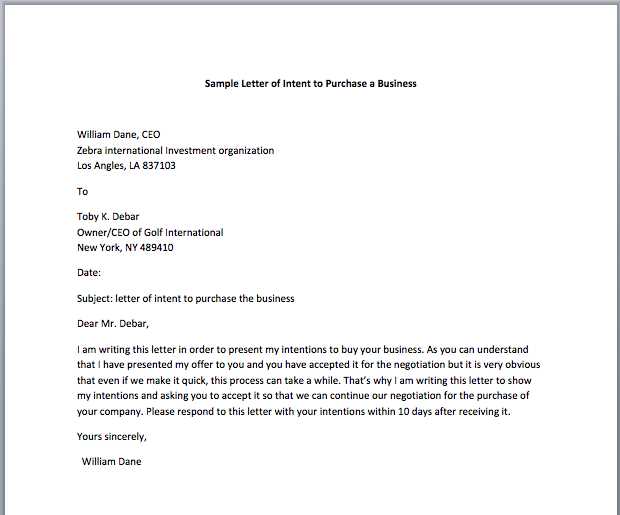
In any transaction involving the transfer of assets or ownership, it is crucial for both parties to clearly express their mutual interest and understanding of the deal. This type of document serves as a preliminary agreement, offering a roadmap for formal negotiations and further documentation. Its primary role is to establish the key terms of the arrangement before moving forward with detailed contracts.
Key Objectives of the Document
For both buyer and seller, this document ensures clarity and reduces the risk of miscommunication. It provides a framework that outlines the goals of the transaction, creating a shared understanding that forms the foundation for more complex agreements. Some of the key objectives include:
- Establishing mutual commitment to the deal
- Clarifying the terms and expectations
- Outlining the steps toward finalizing the agreement
- Defining confidentiality and exclusivity arrangements
Why It’s Essential in Negotiations
Negotiations can often be complicated, with many details to finalize. This preliminary document helps streamline the process by ensuring that both parties are aligned on the basic conditions before delving into more specific agreements. It acts as a sign of good faith, showing that both parties are seriously considering moving forward. Without it, there is a higher risk of misunderstandings or failed transactions.
Key Elements of an Intent to Purchase
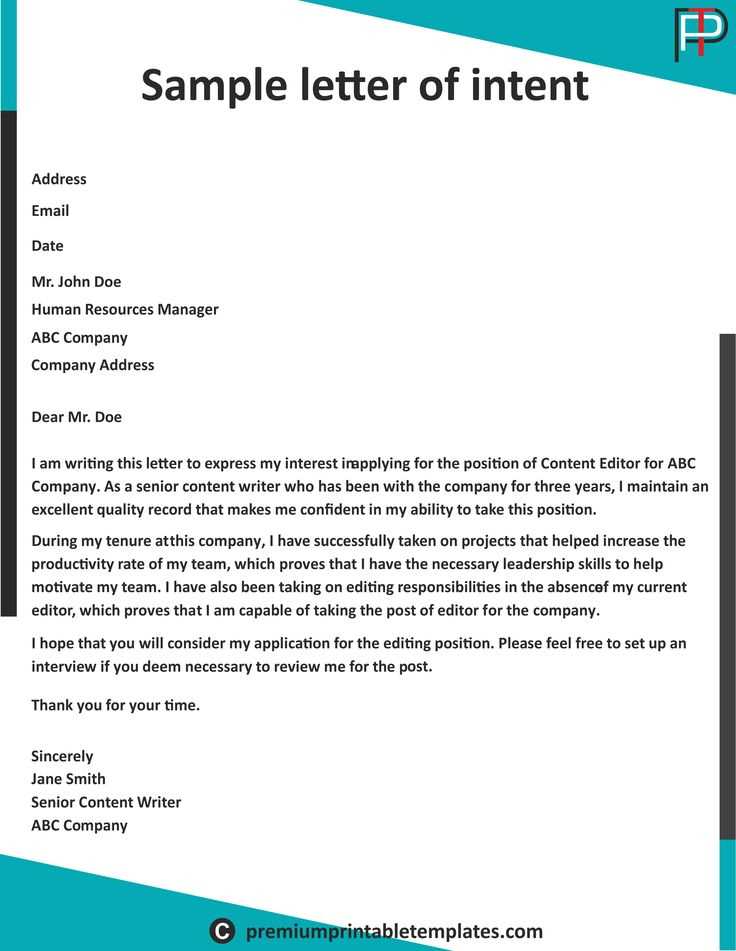
When drafting a document for a transaction involving asset acquisition, it is important to ensure all essential points are clearly covered. This document acts as a framework for both parties to understand the scope and objectives of the deal, outlining the general terms and setting expectations for future negotiations. Certain elements must be present to make the document both effective and legally binding.
Critical Components to Include
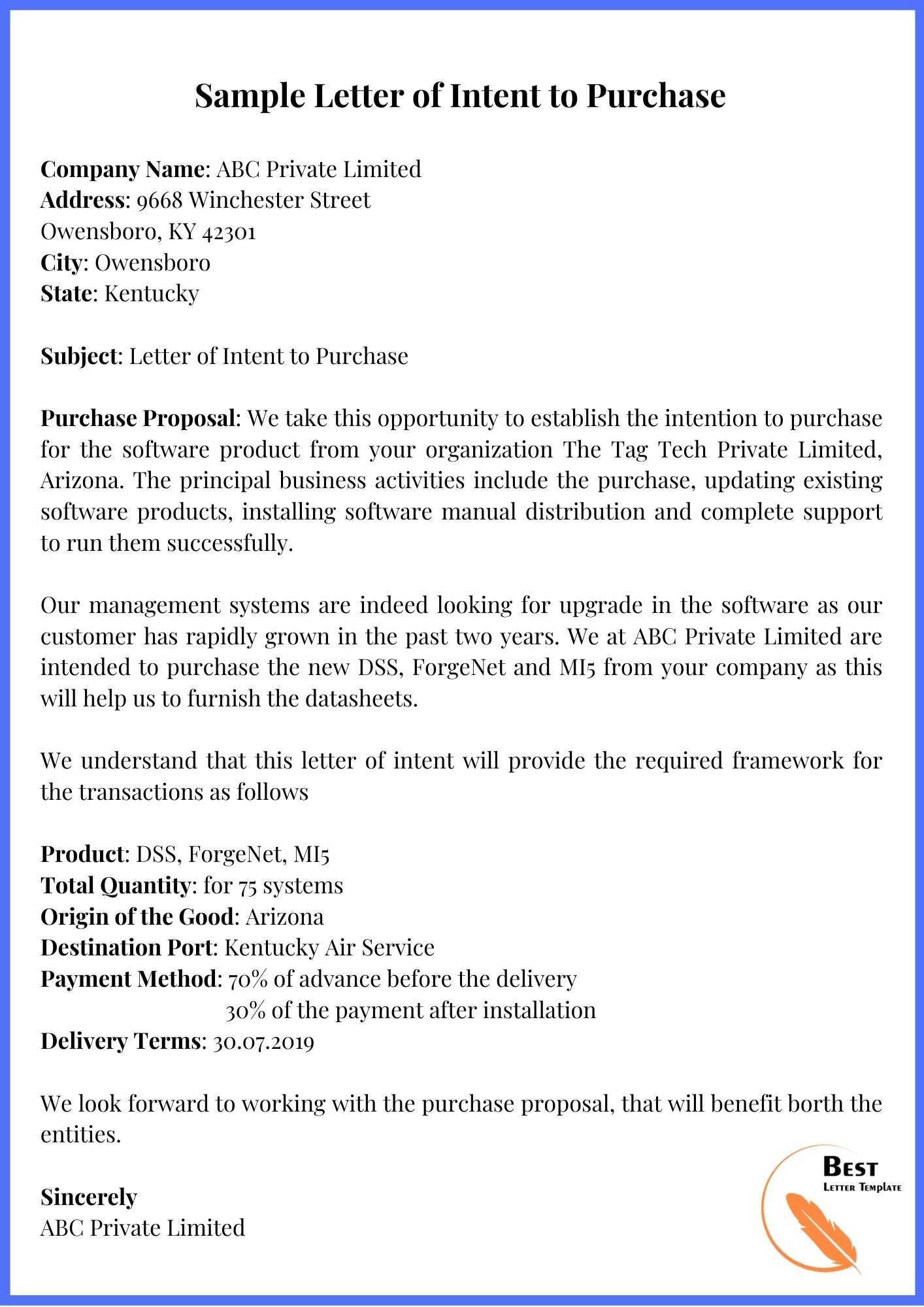
The following elements are crucial to the success of the agreement and help clarify the relationship between the parties involved:
- Transaction Overview: A brief summary of the assets or interests being transferred.
- Financial Terms: The agreed-upon price, payment structure, and any contingencies that may affect the financial aspects.
- Timeline: An outline of the anticipated schedule, including key milestones and deadlines.
- Confidentiality Provisions: Clauses to protect sensitive information shared between the parties.
- Exclusivity Agreement: Terms that prevent one party from pursuing similar transactions with others for a set period.
Clarifying Roles and Responsibilities
Additionally, the document should clearly define the roles and responsibilities of each party, including any required actions on their part during the process. This ensures a smooth progression towards finalizing the transaction, minimizing potential confusion or conflicts. By including these key elements, both sides can have greater confidence in the process and the deal’s eventual success.
How to Structure Your Business Agreement
When formalizing an agreement to transfer ownership or assets, the structure of the document is key to ensuring both parties are on the same page. A well-organized agreement outlines the main objectives, financial terms, responsibilities, and other critical elements. This clarity helps prevent future misunderstandings and ensures that the deal progresses smoothly.
Organizing the Main Sections
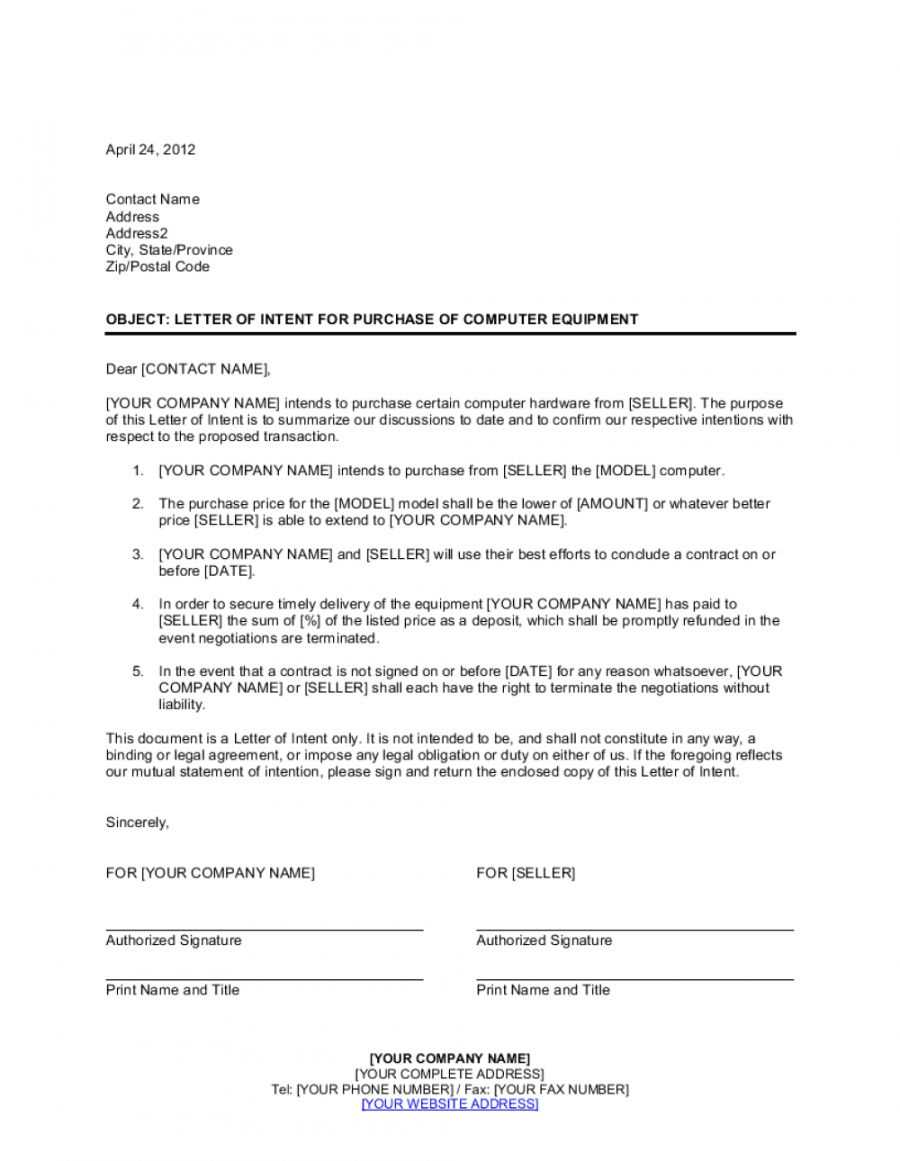
Every document should include distinct sections that focus on specific aspects of the transaction. These sections should be clearly separated to make the document easy to follow and understand. Common sections to include are:
- Introduction: A brief overview of the agreement, including the names of the parties involved and a high-level summary of the deal.
- Transaction Details: A clear description of what is being exchanged, including specific terms and conditions.
- Price and Payment Terms: The amount agreed upon, payment schedules, and any contingencies tied to financial aspects.
- Closing Process: A description of the steps each party must take to finalize the deal.
Ensuring Legal Protection
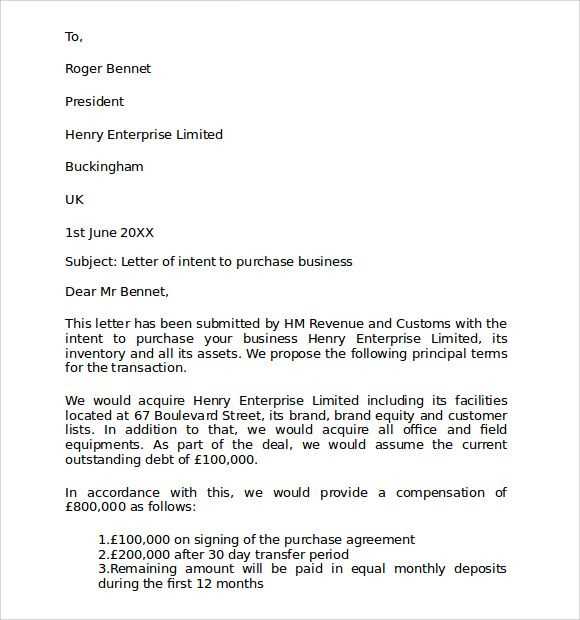
To ensure that both sides are legally protected, your agreement should include clauses for dispute resolution, confidentiality, and non-compete conditions. It’s also important to define the timeframe for each step of the agreement, as this sets clear expectations for both parties. By structuring the document this way, you create a solid foundation for the transaction and help avoid complications during the process.
Important Legal Considerations in LOI
Before entering into any agreement regarding the transfer of assets or ownership, it is essential to consider the legal implications. A preliminary document should not only outline the general terms but also ensure that both parties are protected legally throughout the process. It is crucial to include certain provisions to safeguard against potential risks and disputes during the transaction.
Protecting Confidential Information
One of the most important legal considerations is protecting sensitive information that is shared during the negotiation process. Both parties may exchange proprietary data, trade secrets, or financial details that must remain confidential. To safeguard this information, confidentiality clauses should be included, specifying the extent of protection and the duration for which the information must remain private.
Defining Binding and Non-Binding Provisions
Another significant aspect is understanding the difference between binding and non-binding provisions. While some clauses in the document may be legally enforceable, others are meant only to indicate intent without establishing a formal commitment. It’s crucial to clearly mark which parts of the agreement are non-binding to avoid unintended legal obligations. Exclusivity clauses, for example, may restrict one party from negotiating with other potential buyers or sellers during a specified period.
In addition to these provisions, it is advisable to include terms that cover dispute resolution, termination clauses, and the scope of each party’s obligations. These details can prevent legal complications should any disagreements arise during the transaction process.
Common Mistakes to Avoid in an LOI
While drafting a preliminary agreement for a deal involving asset or ownership transfer, it is easy to overlook key aspects that can lead to complications later on. A well-crafted document sets the tone for the entire transaction, but common mistakes can undermine the effectiveness of the agreement and cause unnecessary delays or confusion. Being aware of these potential pitfalls can help ensure that the process moves forward smoothly.
One common mistake is failing to clearly define the key terms of the deal, such as the scope of what is being transferred, the agreed price, or the expected timeline for closing. Without clarity, there may be misinterpretations that could derail negotiations or delay the process. Another frequent issue is not addressing the exclusivity of negotiations, which can lead to the involvement of competing parties and cause conflicts of interest.
Additionally, not setting clear expectations regarding the confidentiality of shared information can expose sensitive data to risks, and failing to define binding versus non-binding clauses can lead to unintended legal commitments. Always ensure that the document includes all necessary terms and clarifications to protect both parties and avoid unnecessary disputes.